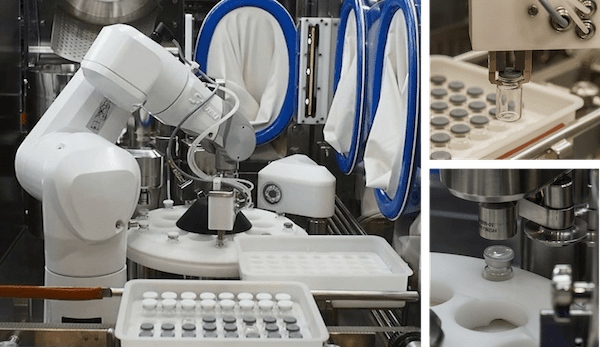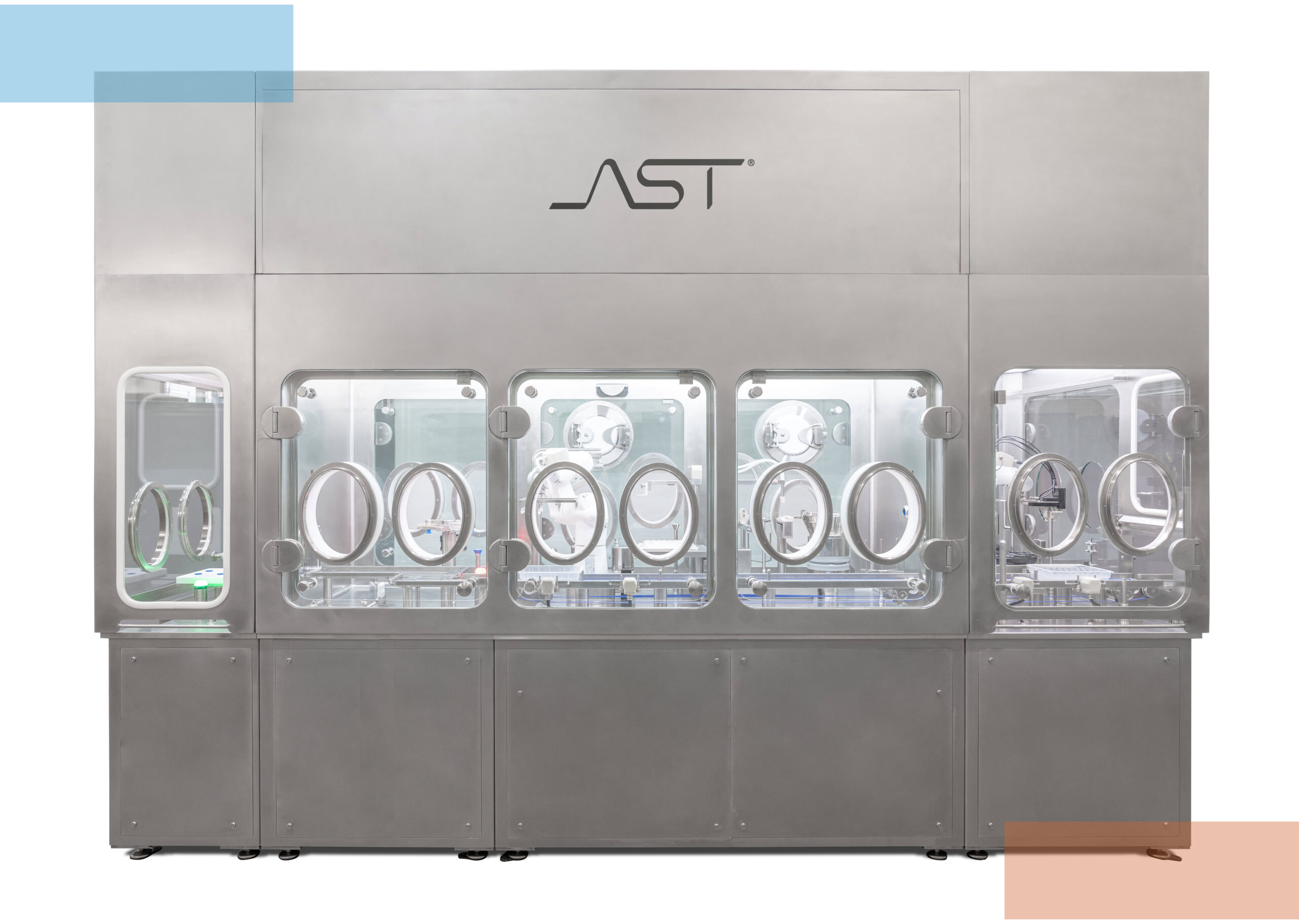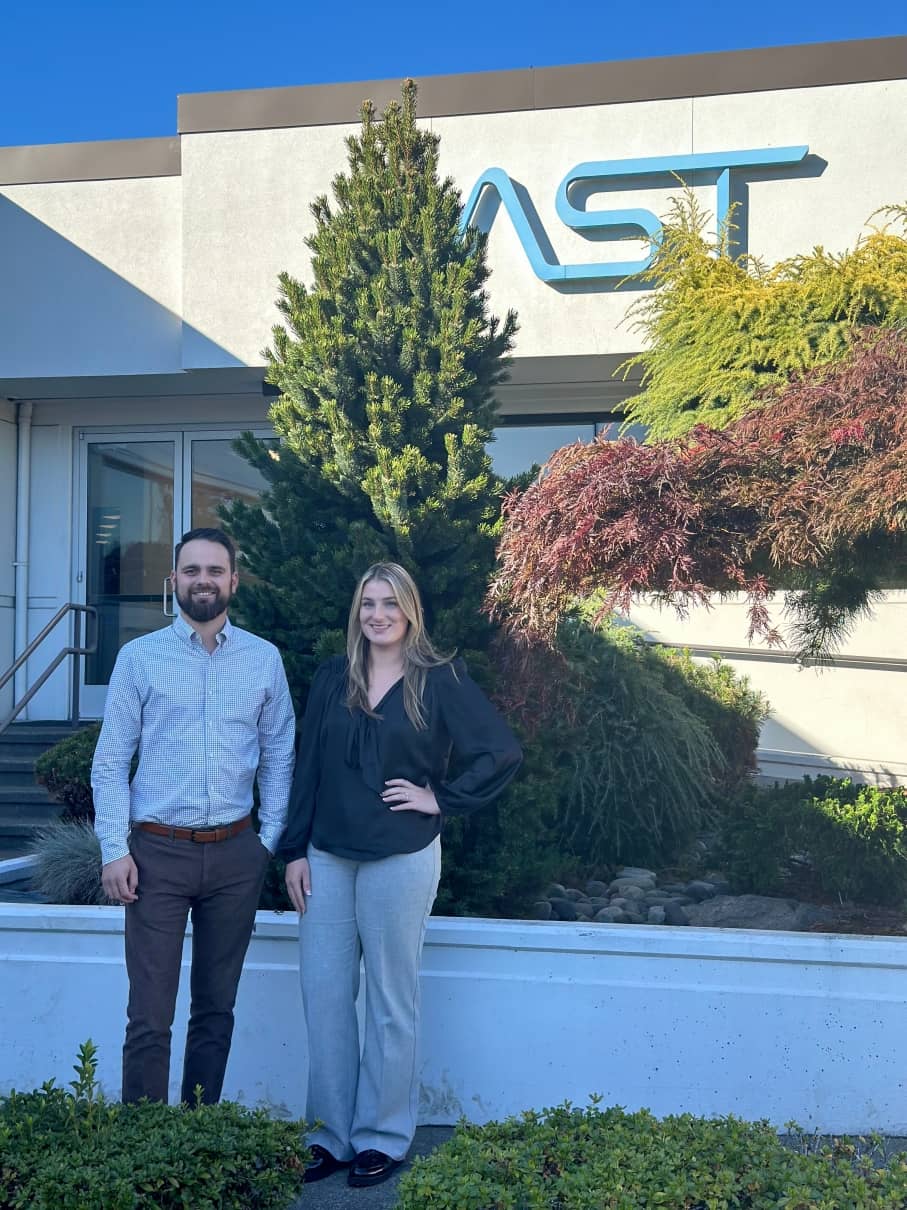Pre-sterilized, Ready-To-Use (RTU) vials are quickly gaining adoption within the biopharma industry, particularly for small batch applications. RTU vials simplify the processing requirements and facilities necessary to aseptically fill/finish drug products by eliminating equipment, utilities and production space required for container preparation. To realize the full breadth of benefits RTU vials can provide, integration with traditional processes and equipment must be carefully considered. Modern and flexible technologies such as robotics help to streamline the integration of RTU vials into aseptic fill/finish processes. This article discusses how one such process that benefits from robotic automation is the vial sealing or capping process required to fully close vials.
Integrating Ready-To-Use Vials with Proven Sealing Solutions
Pre-sterilized, Ready-To-Use (RTU) vials are quickly gaining adoption within the biopharma industry, particularly for small batch applications. RTU vials simplify the processing requirements and facilities necessary to aseptically fill/finish drug products by eliminating equipment, utilities and production space required for container preparation. To realize the full breadth of benefits RTU vials can provide, integration with traditional processes and equipment must be carefully considered. Modern and flexible technologies such as robotics help to streamline the integration of RTU vials into aseptic fill/finish processes. One such process that benefits from robotic automation is the vial sealing or capping process required to fully close vials.
Vial Sealing Process
Vial sealing, or “capping” as commonly referred, is the final process required to fully close a parenteral vial. The process simply described, entails placing a cap or over-seal atop a filled and stoppered vial, compressing the stopper with the cap and then forming the caps aluminum skirt around the neck of the vial. The end result is a vial with a properly compressed rubber stopper with an optimal seal around the vial opening; maintaining the sterility and integrity of the drug product within. Given that this process is vital to ensuring long term sterility and quality of the drug product, having a reliable and repeatable vial sealing process has considerable regulatory significance.
Although appearing simple, there are several technical variables that must be optimized and maintained in a production vial sealing process. Critical variables such as stopper compression must be monitored and controlled on a per vial basis to ensure that the cap applies the correct amount of stopper compression prior to forming the cap skirt around the vial neck.
In order to be in compliance with European EMEA Annex I regulatory requirements inspection must also be performed to ensure proper placement of the stopper onto the vial prior to application of the cap. This inspection process is typically performed with machine vision or laser micrometer systems that are sensitive enough to detect minute gap distances between the vial top and the sealing surface of the rubber stopper.
Current and Alternative Vial Sealing Technologies
The traditional cap forming process generally uses one of two processes for vial sealing. The first and most common for small scale applications is a jaw style crimper and the second being a rail design that may be fixed or rotating. The jaw crimper has the advantage of generating very little aluminum particles during operation, but overtime aluminum builds up on the jaws that can degrade the quality of the vial seal. The rail design is well suited for higher speed production, provides better stopper compression control and forms a pharmaceutically aesthetic crimp. Unfortunately, this process can generate higher particulate levels which can present a contamination risk to uncapped vials if not properly contained.
To overcome concerns related to particle generation, a number of companies such as Daikyo Seiko and Raymondlife have been working to develop plastic cap options to replace the traditional aluminum cap. With the plastic cap approach the cap can be pressed firmly onto the vial, fully seating the rubber stopper, without generating contaminating particles during the process. For lyophilization applications the cap can be applied and then pressed onto the vial by the lyophilizer shelves before exiting the lyophilizer. The advantages of the plastic cap are obvious; by minimizing or eliminating particles contamination risk is reduced, by sealing the vial immediately after filling the overall exposure to the environment is minimized thereby also reducing contamination risk.
However, despite the advantages of the press-fit cap there are a few technical disadvantages that require mitigation before full implementation. The primary disadvantage is the press-fit caps ability to provide a consistent high integrity seal; which can be challenging when one understands the amount of dimensional variation vials, rubber stoppers and plastic caps have. This is further complicated by the fact that various rubber materials compress differently than others. Therefore, something as simple as changing the stoppers rubber formulation to improve product stability could prove detrimental to the container closure integrity.
For lyophilizer applications the shelves are designed with adequate mechanical force to fully seat partially seated rubber lyo stoppers onto the vials. The difference in force required to seat a lyo stopper versus a press-fit cap is considerable. This significant increase in required force to properly seat a press-fit cap requires the shelves and collapsing mechanism to be upgraded to mechanically apply the forces necessary to properly seal the press-fit cap uniformly on all the vials on the shelf. These essential modifications increase the cost of implementation and make using an existing lyophilizer unfeasible without significant modifications.
Lastly, having a final confirmation that each vial’s press-fit cap is fully seated is paramount to ensuring every vial is properly sealed. Relying upon a shelf to fully seat hundreds to thousands of vials without confirmation before exiting the filling line by strict quality standards is risky. The same concern is shared by filling machines that use nested press-fit caps to seal nested vials, because they have no direct feedback to confirm that each cap has been placed during the placement process.
Integrating RTU With Proven Vial Sealing Methods
Advanced vial closing solutions that fully capture the benefits of ready to use vials requires a combination of industry proven closing methods integrated with technologies that provide flexibility and improve overall product quality. AST’s Vial Sealing Module (VSM) does just this. This machine module seals ready-to-use nested vials, but has designed out many of the common quality and process challenges that befall current system designs.
Filled and stoppered vials transfer into the Vial Sealing Module where they are robotically placed into individual pockets on a starwheel. The robotic handling of the vials allows the system to easily adapt to multiple vial-nest configurations without change parts or manual adjustments to the robotic handling system. At no point during the handling process are any vials in contact with each other or metal which could create particles or damage the vial. The motion profile of the robot can be adjusted to gently handle sensitive biologic products while being transported. Once the vial is placed into the starwheel each container is inspected with a machine vision system to confirm that the inserted stopper is compliant with EU Annex I requirements. If the vial meets the stopper gap requirements the cap is placed atop the stoppered vial and automatically transitions to the sealing station. The vial sealing is performed by compressing the vial to the optimal force; the vial is rotated while a free spinning rail or disk forms the cap’s aluminum skirt around the vial neck. Alternatively, a press-fit cap can be placed onto the vial and this same sealing station can apply the required amount of force to fully seat the press-fit cap onto the vial. In either instance, the machine has the applied force control and instrument feedback to confirm that each vial stopper has been compressed to the optimal level before being transported back to its original location in the nest.
The AST Vial Sealing Module overcomes areas of quality and regulatory concern. It integrates known solutions to keep particle generation to the absolute minimum, processes vials individually to provide full traceability that each vial conforms to critical process and regulatory requirements, and lastly has the flexibility to process emerging press-fit cap solutions.




